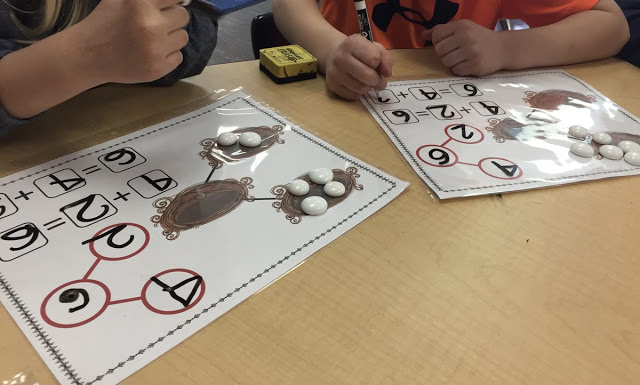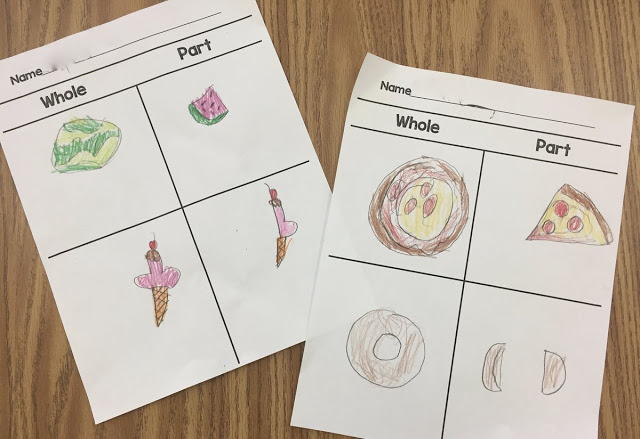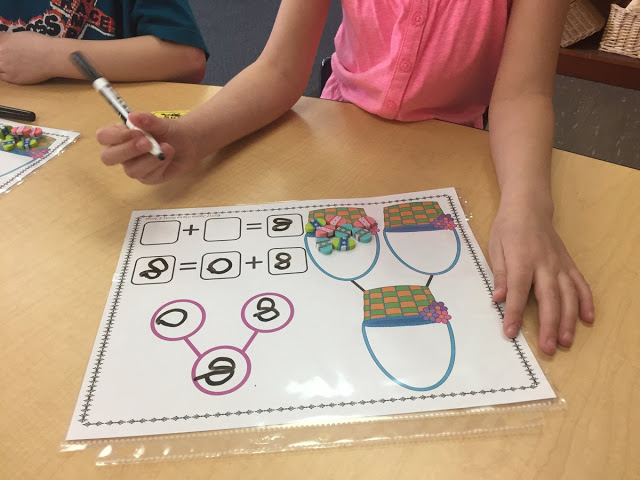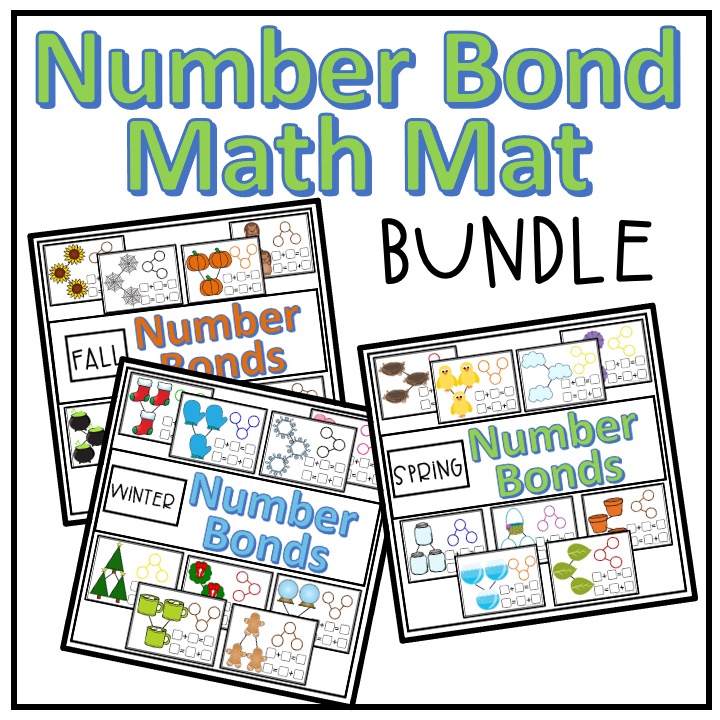Number bonds can be a bit intimidating, so before you jump in, let children spend some time getting to know the graphic and its function.
Here are the 5 concrete steps I use to “cement” children’s understanding of number bonds.
Step 1: Explore the Part and Whole Relationship
Since number bonds are used to help children understand the relationship between a whole number and its parts, it is best to begin by exploring this part-whole relationship.
Food works great for this! We sorted food picture cards into “whole” and “part” groups.
We then looked closely at our snack to see who was eating a “part” and who was eating a “whole!”
I also had the children draw part/whole pictures which helped me to see how well they were grasping the concept.
Step 2: Explore the Number Bond Graphic
Once children understand the meanings of the words “part” and “whole,” you will want them to closely examine the number bond template.
I gave each child their own copy, and invited them to share what they noticed about it.
I then challenged them to point to the “whole” circle and the “part” circles.
It’s important that you do this with the template in all four directions as number bonds are displayed in various ways and we want children to be flexible in their thinking.
Step 3: Build Number Bonds
Children need to know the number bond inside and out before working with it. Provide opportunities for children to build number bonds using hands-on materials.
We used paper plates and straws, but get creative and use what you have on hand! Make sure children build them in all directions and ask them to touch the whole and parts when named.
Step 4: Draw a Number Bond
Number bonds aren’t always made with circles! Sometimes boxes, in both square and rectangular shapes, are used.
I invited children to draw number bonds in all directions using shapes of their choosing. Some drew squares and triangles, while others got real creative and drew stars, hearts, and suns.
Step 5: Step Inside the Number Bonds
Next Steps with Number Bonds

















 100 Chart Games & Activities for Beyond the 100th Day
100 Chart Games & Activities for Beyond the 100th Day Number Sense Activities for Your Kindergarten Math Center
Number Sense Activities for Your Kindergarten Math Center Teaching One More and One Less with Number Staircases
Teaching One More and One Less with Number Staircases Teaching Numbers 1-10: A Kindergarten Counting Strategy
Teaching Numbers 1-10: A Kindergarten Counting Strategy
I LOVED this post! Great variety, great fun… thank you
That's great to hear – thank you!
I absolutely love this! The way you get them to understand the concept before doing it with numbers is fantastic. I will definitely be using these ideas this year!
Another form of surety is the Bid Bond, issued for a restricted scope of bid sum, bid by the contractual worker for anchoring an agreement or delicate. RAFFUEL SURETY GROUP
Thank you for this wonderful idea!!
Thank you so much for this great resource and teaching ideas!! Love it!!
Great resource and teaching! Thank you.